
Ludwig Mies van der Rohe was born on March 27th, 1886, as Ludwig Michael Mies, in Aachen, Germany. Classically trained as a stonemason, at 19 he moved to Berlin where he worked for Bruno Paul, an art nouveau architect and industrial designer.
Mies’ professional focus was to define new architectural and design styles that reflected a more modern and industrialized time. Along with Walter Gropius and Le Corbusier, Mies is widely regarded as one of the pioneering masters of Modern architecture. His infamous quotes “Less is more” and “God is in the details” ring true to his architectural projects as well as his furniture and interior designs. He promoted purity in his minimalist style which was often referred to as “skin and bones” architecture by Mies himself.
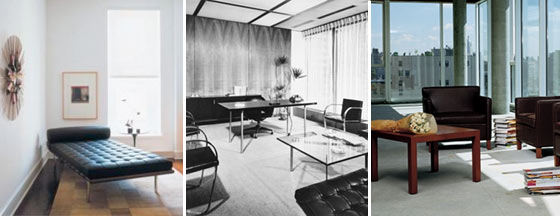
He received his first commission at 20; a new home for a philosopher and university professor, Alois Riehl. In 1908, he began working for architect Peter Behrens. Four years later, he was married and opened his own office in Berlin. The marriage did not last more than nine years; it was then that Ludwig Mies became Ludwig Mies van der Rohe. Rohe was Mies’ mother’s maiden name.

MR Chaise Lounge, Barcelona table, Barcelona bench
_
The Friedrichstrasse skyscraper was his first critically acclaimed piece and generated a lot of attention. World War I ended and the need for skyscrapers was prevalent in the US. With the spotlight clearly shining on him, Mies would lend his creative talents to numerous publications and avant-garde artistic organizations.
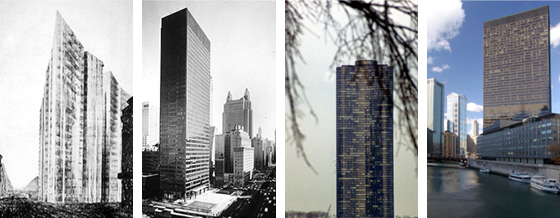
Friedrichstrasse skyscraper, Seagram building, Lake Point Tower, and IBM Plaza
_
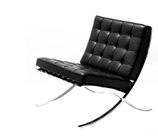 _
_
In the late 20s, the Barcelona Pavilion was realized and housed the first Barcelona chairs(images right and below) which were originally intended to be found only within said structure. Much of this buildings’ underlying qualities transpired into Mies’ later works.
_
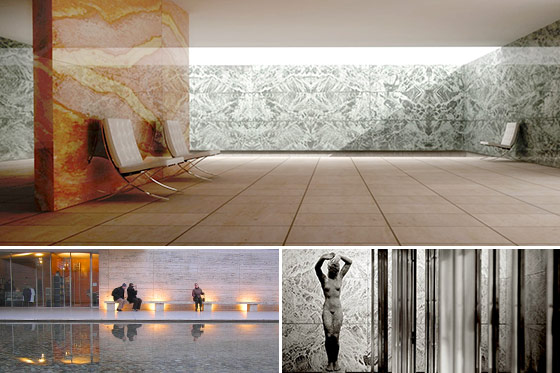
Barcelona Pavilion
Natural light was always a major factor, as was fluidity from room to room, from in to outdoors and back. He favoured straight lines, flat roofs and often used glass, concrete and steel. Structural elements, usually hidden or toned down by most architects at the time, were brought to the surface, becoming decorative and always fitting.
_
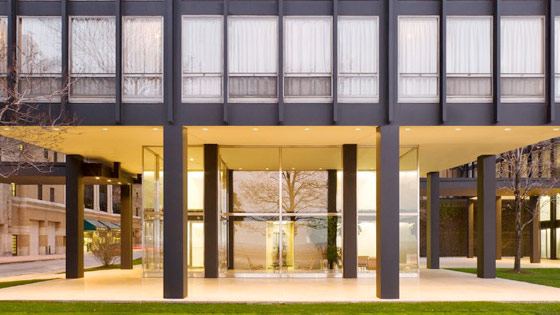
_
In the 1930s, Mies’ work was on display in MoMA’s modern architecture: international exhibition and caught the eye of the North American architectural industry. It was during this time that Mies became the director of Bauhaus until it’s untimely demise, induced by the Nazi’s obstruction to free thought and creative development.
_

MR, Four Seasons, Krefeld, Flat Bar Brno
_
 He moved to the USA in 1937 and became the head of architecture at the Illinois Institute of Technology, where he later redesigned the campus.
He moved to the USA in 1937 and became the head of architecture at the Illinois Institute of Technology, where he later redesigned the campus.
In 1944, Mies became an American citizen. His career skyrocketed, during this time the very well known Farnsworth House was realized.
_

Farnsworth House
He would continue to grow in popularity through the 50s, completing countless and enormous projects including the Twin Towers in Chicago, the Seagram building in New York and the TD Tower in Toronto.
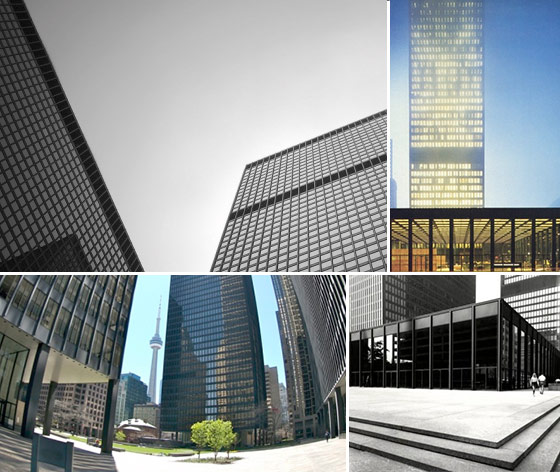
Mies’ TD tower in Toronto
His once beloved city of Berlin would call upon him in 1962 to create the New National Gallery. Mies’ visited the site several times during construction but was unfit to attend it’s grand opening in 1968. Not one year later, on August 17 in Chicago, Ludwig Mies van der Rohe died. We will forever continue to see Mies’ influence in architecture, he was a true master of design.
_
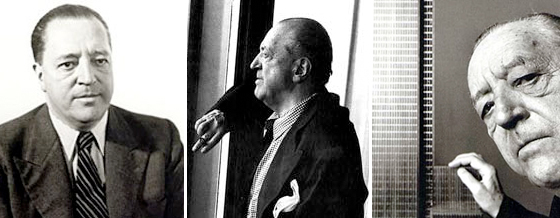
_
BBC Radio conducted an interview with Mies in 1959. The following audio file includes several excerpts from that interview:
_
_

Barcelona stool, Barcelona stool with sling, MR table
_
_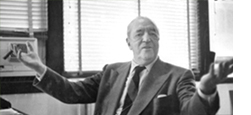 _
_
“I don’t want to be interesting. I want to be good.”
– Mies van der Rohe
_
Share this post on Twitter or Facebook:
